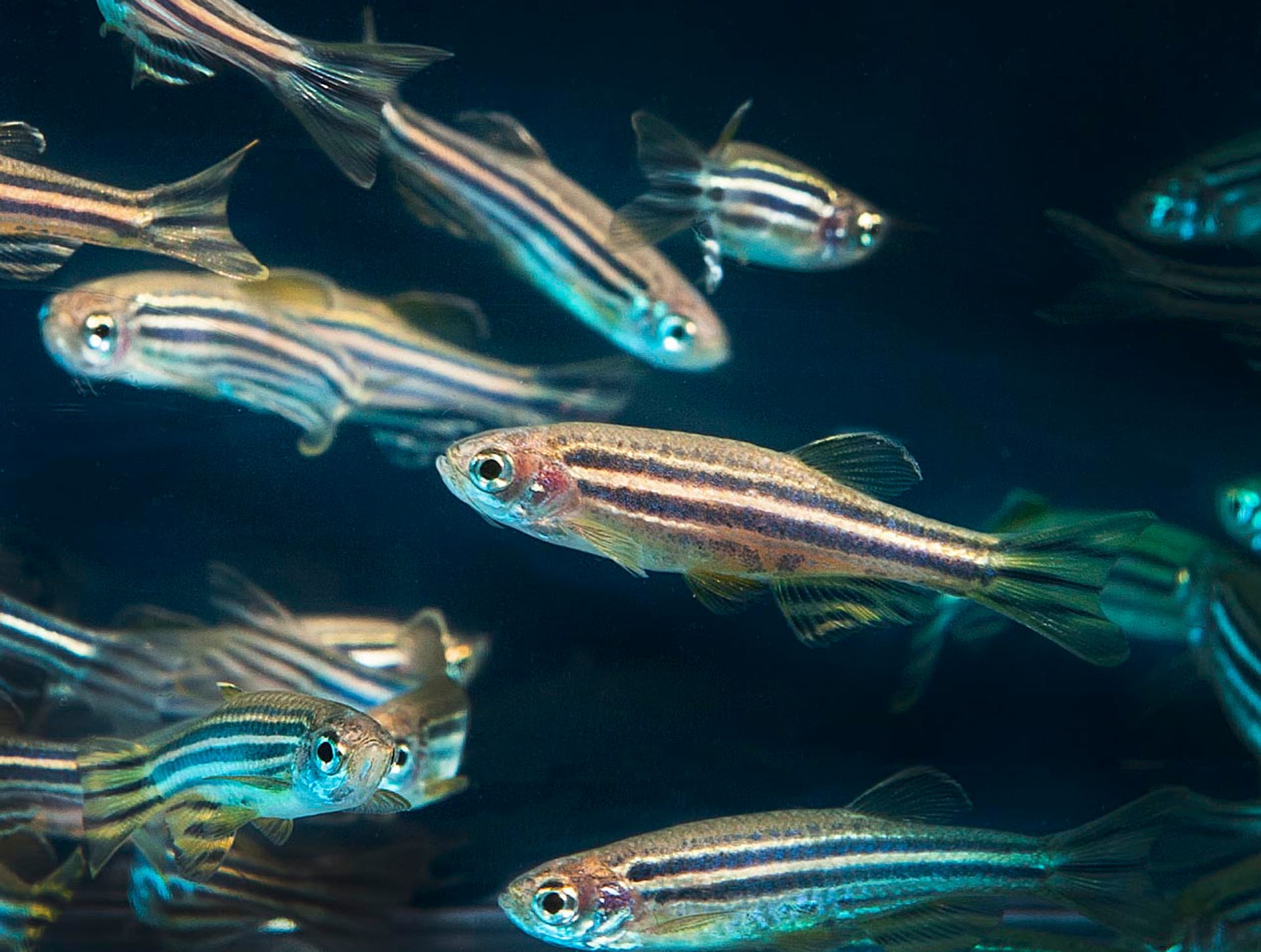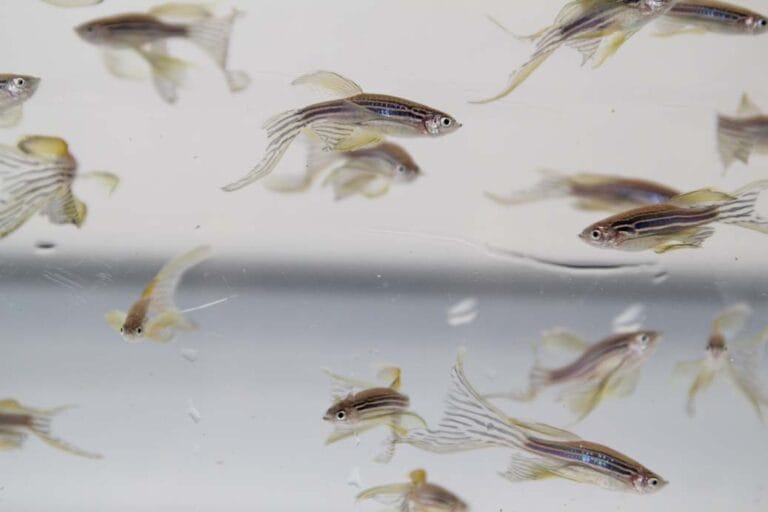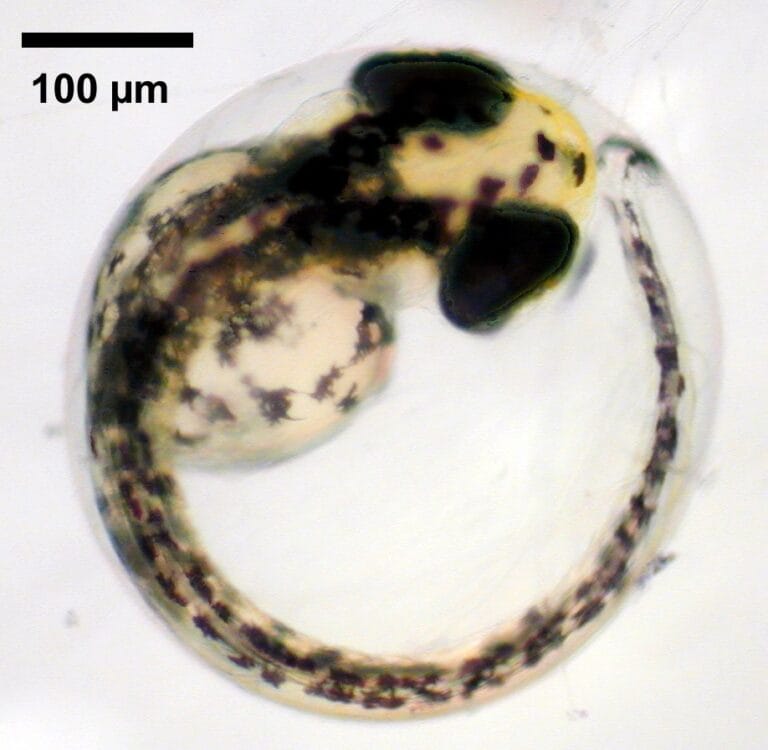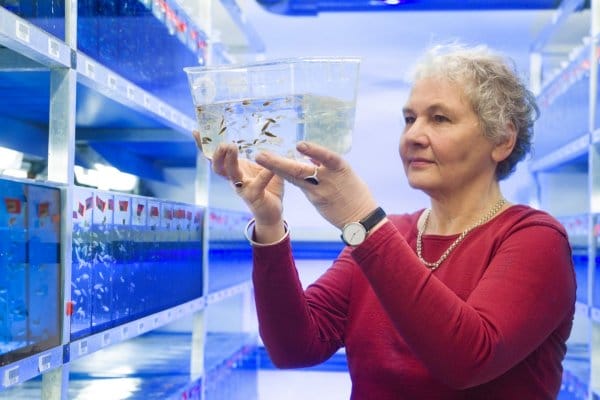Tiny fish, big splash: the story of the zebrafish

The tropical zebrafish (Danio rerio) is a relatively new addition to the suite of model organisms used by researchers to better understand biology.
- The zebrafish (Danio rerio) is a tropical fish from the minnow family with a genetic structure surprisingly similar to that of humans.
- Zebrafish research became mainstream in the 1990s. Today, the zebrafish is a well-established model organism for studying developmental biology. Read more on our fact page.
Key terms
Model organism
A species that has been widely studied in biology, usually because it is easy to maintain and breed in a laboratory setting and has particular experimental advantages.
DNA
(deoxyribonucleic acid) A molecule that carries the genetic information necessary to build and maintain an organism.
Genome
The complete set of genetic instructions required to build and maintain an organism.
DNA sequencing
The process of determining the order of bases in a section of DNA.
The history zebrafish research
For many decades, the fruit fly Drosophila melanogaster was the main model organism used to understand developmental biology – the progression of an organism from a fertilised egg into an adult.
Today, the zebrafish (Danio rerio) is well established as a model to study this process. However, although zebrafish have been researched since the 1960s, they only shot to prominence in the late 1990s.
Its rise to fame all began with George Streisinger, a tropical fish enthusiast at the University of Oregon. George was interested in using a vertebrate model that was physiologically simpler than the mouse, so that he could study the development and function of the nervous system.
In the 1980s, George and other scientists in Oregon highlighted the potential of the zebrafish to be used in this way, attracting attention from the worldwide scientific community.

Zebrafish as a model organism
The zebrafish comes close to being the ideal model organism for vertebrate development because it appears to combine the best features of all the other models. Like the frog, zebrafish embryos develop externally and can be viewed and manipulated at all stages. However, the embryo is simpler than the frog, develops faster and, like worms and fruit flies, it is transparent.
Like the mouse, the zebrafish can be used for genetics analysis and has a similar generation time of two to three months. However, unlike the mouse, the zebrafish is smaller and can produce more offspring in a shorter time: around 200 eggs per week, compared to a mouse litter of 15 pups in 21 days.


Zebrafish embryos develop outside the body and can be viewed and manipulated at all stages.
Screening for zebrafish mutations
The big boost to the zebrafish field came in the early 1990s when two big genetic screens were searching for fish with interesting mutations. This is an important strategy to study genetics: by observing what happens when the gene is mutated and not fully functional, we can better understand the role of the gene in normal development.
The zebrafish screens were led by Christiane Nüsslein-Volhard and Wolfgang Driever. Both had previously worked with the fruit fly – and in fact, Christiane shared the 1995 Nobel Prize for her pioneering genetic screens that revealed the genetic control of early fruit fly embryonic development.

The zebrafish genome project
However, screening for mutant organisms is just one part of the story. Although we can observe the effect of the mutation, we don’t know which gene is affected. Identifying the faulty gene is very difficult, especially without a full genome sequence to refer to.
Scientists at the Wellcome Trust Sanger Institute set out to rectify this and began to sequence the zebrafish genome in 2001, completing it in 2013. This revealed the zebrafish has more than 26,000 protein-coding genes – more than humans and the largest set of any vertebrate sequenced so far. It also showed that around 70% of human genes have at least one similar gene in the zebrafish.
As with other model organisms, the fully sequenced zebrafish genome has acted as an invaluable reference tool for scientists. Not only does it help speed up studies of development, but it also allows researchers to study the evolution of vertebrate gene function.

The fully sequenced zebrafish genome has acted as an invaluable reference tool for scientists.
Ongoing zebrafish research
Many studies involving the zebrafish complement those in other model organisms. The zebrafish is often used to tackle questions that can’t be answered by studying other model systems such as frogs or mice. This is primarily because of the ease with which scientists can study their genes.
Understanding the development of the nervous system
For example, because the embryo is transparent, scientists can use fluorescent proteins to label specific zebrafish cells and their components, and then use the microscope to watch the fate of the cells in the presence or absence of different genes.
This technique has helped scientists to understand how certain nerve cells develop during the early stages of development. It can also help scientists to understand how these nerve cells die, for example during different types of dementia.


The zebrafish is often used to tackle questions that can’t be answered by studying other model systems such as frogs or mice.
Mending broken hearts
Zebrafish are showing real promise in heart failure research because zebrafish have the unique ability to repair their own heart muscle.
For example, if you remove part of a zebrafish’s heart it can grow it back in a matter of weeks. It’s hoped that the same principles could eventually be applied to humans with heart disease. If scientists can switch on the same genes in humans that allow zebrafish to repair their damaged tissue, then people may have a better chance of recovering after a heart attack.
The zebrafish is also being used to identify the genes and pathways underlying a broad range of human diseases from cardiovascular and musculoskeletal disease to deafness and cancer.
